Mark Sisson's Blog, page 282
November 1, 2014
Cabbage Chips
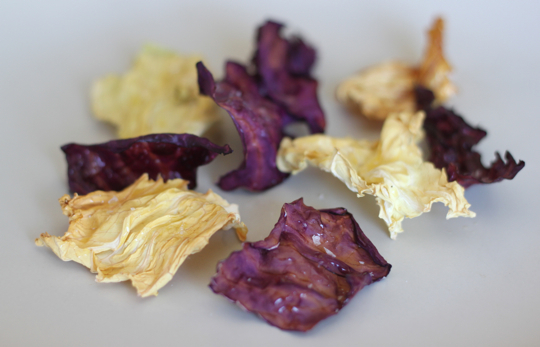 What is there not to like about crispy, salty snack food that is also good for you? Especially when said snack food is so easy to make that it barely counts as cooking and the only ingredient is cabbage, plus a touch of extra virgin olive oil and sea salt.
What is there not to like about crispy, salty snack food that is also good for you? Especially when said snack food is so easy to make that it barely counts as cooking and the only ingredient is cabbage, plus a touch of extra virgin olive oil and sea salt.
Cabbage chips are yet another delicious option in the veggie chip category and a perfect way to satisfy a craving for something crunchy and salty.
Similar in flavor to kale chips, but a little better looking, cabbage chips can be made from red or green cabbage. And they really are simple to make: If you don’t have a dehydrator, just pop the cabbage leaves in the oven at a low heat for a few hours. Before eating, brush the crispy chips with olive oil and sprinkle with sea salt. If you’re feeling adventurous, open the spice drawer and flavor your cabbage chips with dried dill or cayenne.
Servings: About 3 dozen or so chips
Time in the Kitchen: 10 minutes, plus 2 to 3 hours to dry the chips
Ingredients:
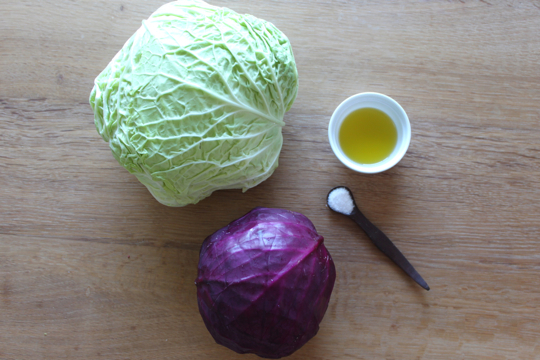
1 head of cabbage, red or green (savoy works well)
Olive oil
Sea salt
Instructions:
Preheat oven to 200 ºF/93 ºC.
Cut the cabbage in half and cut out the core. Separate the cabbage leaves. Cut large leaves in half or into fourths.

Place cabbage leaves on wire racks set over baking sheets.
Bake until crisp. Smaller/thinner leaves will take about 2 hours, larger/thicker leaves can take up to 3 hours.
When the leaves are done baking, brush with olive oil and sprinkle with sea salt and dill.
Recipe note: Brushing the cabbage leaves with olive oil and salt before baking also results in very tasty chips, but the chips must be baked longer and cooled completely before eating or they won’t be crispy enough.

Not Sure What to Eat? Get the Primal Blueprint Meal Plan for Shopping Lists and Recipes Delivered Directly to Your Inbox Each Week




October 31, 2014
A Journey Just Begun: How I Lost 60 Pounds in 6 Months and Became a Man on a Mission
It’s Friday, everyone! And that means another Primal Blueprint Real Life Story from a Mark’s Daily Apple reader. If you have your own success story and would like to share it with me and the Mark’s Daily Apple community please contact me here. I’ll continue to publish these each Friday as long as they keep coming in. Thank you for reading!
 I have been contemplating for about a month now whether I should write my “success” story or wait until I reached my ultimate goal. After thinking this through, I realized I will never reach my ultimate goal since I am now living a new lifestyle, and this lifestyle has no end (other than my eventual death, which hopefully isn’t until I am a very old man). With that realization, I am here now, typing my story…
I have been contemplating for about a month now whether I should write my “success” story or wait until I reached my ultimate goal. After thinking this through, I realized I will never reach my ultimate goal since I am now living a new lifestyle, and this lifestyle has no end (other than my eventual death, which hopefully isn’t until I am a very old man). With that realization, I am here now, typing my story…
Growing up, I was the typical chubby kid in middle school and early on in high school. I then fell victim to the “you must be skinny” mentality. I stopped eating regularly, but also became quite active with biking and walking long distances to work (especially to Harvey’s—a fast food joint in Canada). I ate very little, but when I did, it was a bag of chips, cookies, hamburgers, poutine, fried chicken, and pizza (you know, those types of foods). I thought I was doing great. I basically stayed at 160 lbs from grade nine (when I was 5’1”) to grade 13 (when I was 5”11”). I was finally the skinny guy at graduation; albeit my blood pressure was 150/90 at that young age. Everything was fine according to multiple medical tests. I was skinny, so I figured everything must be okay. My gut was also a problem at this young age. I was told that it “ran in my family.” I constantly had to run to the bathroom after each meal with cramps, diarrhea, etc.
I then started University. I went into nursing, so I started adhering to what was considered a “healthy lifestyle” in terms of eating. I really tried to follow Canada’s Food Guide, which recommended of a ton of grains and very little meat. I began lifting weights and doing cardio, but I got into liquor a little too much (the weekend parties, the mid-week cheap beer pitchers, and the slow times between classes at the pub having liquid lunches). Slowly and surely, I gained 15 pounds that first year of school. The thing is, I started looking better in the mirror. I was gaining muscle, and ultimately felt like I was doing fine. The problem is, the weight slowly kept coming on at a rate of about 5 pounds per year. Also, my gut issues, blood pressure, and everything else just got worse.
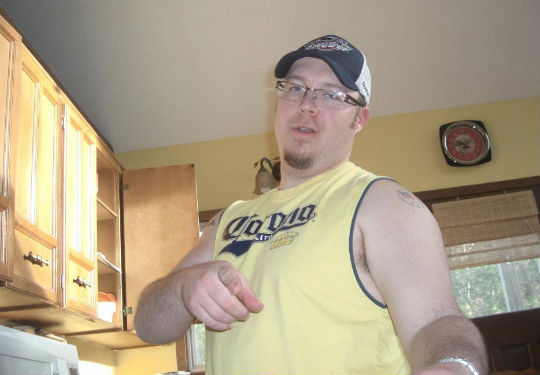
I also met my wife to be at the end of my first year of university. It was love at first sight for sure. We loved going to bars and clubs together. Drinking got heavier, and when I started working as a nurse, my drinking got even worse. The stress and pain that I saw at my job made me turn to liquor. It would numb the horrible things I saw that humans could do to each other.
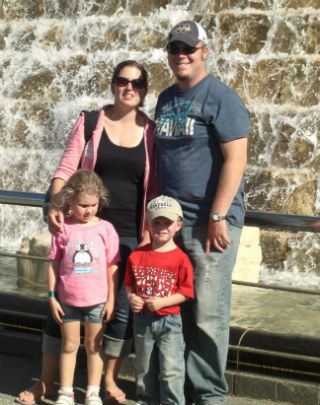 I got engaged, then married, and finally had two wonderful kids. I loved them to death! But through all of these wonderful things, my weight and health kept getting worse, to the point where I was during last August, 2013. I was not feeling good for a while, but kept dismissing it as a “stomach bug.” I had been sick at least 10 days in the last few months, and I was starting to get concerned about missing so much work. But then the fever hit, and I was laid out for a few days before finally getting in to see my doctor. I was given the full assessment and diagnosed with a diverticulitis flare-up. This was the first time ever in my life that something scared me about my health. I was put on a course of antibiotics, and the diverticulitis flare-up went away. I immediately changed my diet to include as little meat as possible, no nuts, plus lots of beans and legumes…because it was healthy, right?
I got engaged, then married, and finally had two wonderful kids. I loved them to death! But through all of these wonderful things, my weight and health kept getting worse, to the point where I was during last August, 2013. I was not feeling good for a while, but kept dismissing it as a “stomach bug.” I had been sick at least 10 days in the last few months, and I was starting to get concerned about missing so much work. But then the fever hit, and I was laid out for a few days before finally getting in to see my doctor. I was given the full assessment and diagnosed with a diverticulitis flare-up. This was the first time ever in my life that something scared me about my health. I was put on a course of antibiotics, and the diverticulitis flare-up went away. I immediately changed my diet to include as little meat as possible, no nuts, plus lots of beans and legumes…because it was healthy, right?
Well, my gut just got worse over the next few months. I had been at my heaviest for a few months at 242 lbs. I was having trouble keeping my breath with very simple activities. Romance was starting to lag and performance was too. I was not keeping up with my kids as I should have. All in all, I was just really at the lowest in terms of health at this point.
I had been reading for a while on Mark’s Daily Apple, but was not able to get my wife to switch over—that is, until one of her friends started talking to her about it. This friend is also featured in the “success” section of Mark’s Daily Apple. After a few months of contemplating and seeing me suffer, she was on board, and we both jumped into this full force. We started in March 2014, and within one week I had lost 10 lbs. The weight was great to lose, but the bloating, gas, running to the bathroom, and energy levels improved immediately as well. I was in disbelief. There was no way in the world it could be that easy…
The weeks blended together, but even without exercise, the weight was melting away. Within one month, I was down to 215 lbs. I felt like a new person. People at work were amazed, and I began actually walking my talk of health. I began working out at the small local gym. I focused only on four bodyweight movements, but it was enough. I stuck to the Primal Fitness book, and slowly began changing things up, just to have fun. I was getting stronger, faster, and yes, lighter. I was getting people interested, and, slowly but surely, a few more people at my work decided to try the lifestyle. They have seen amazing results so far.
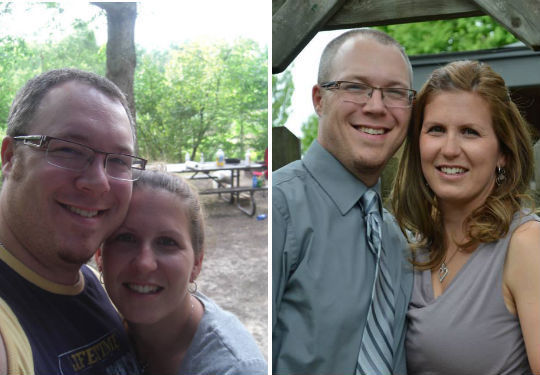
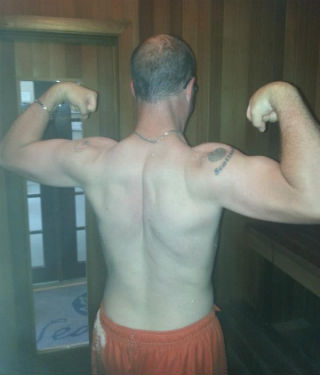 Now, six months into my new journey, I am at a happy 182 lbs (my ideal weight). I am in the maintenance swing of things in terms of my diet, but my physical abilities are my new goal now. I am slowly seeing progress in the gym, and in the mirror. I want to continue to lose the fat, but put on the muscle to look nice, slim, and toned. I am getting there—down to 17% body fat from my initial 42%. But my ultimate goal is to begin competing in the Tough Mudder series. I want to tell everyone my diverticulitis is completely gone. My blood pressure is perfect at a routine 120/80, and my resting heart rate is routinely at 55 beats per minute. I never thought that I would see success with health. I had always tried, but the North American Diet did nothing but horrible things for me. Now, with this new lifestyle, I am able to effortlessly attain and maintain my goals.
Now, six months into my new journey, I am at a happy 182 lbs (my ideal weight). I am in the maintenance swing of things in terms of my diet, but my physical abilities are my new goal now. I am slowly seeing progress in the gym, and in the mirror. I want to continue to lose the fat, but put on the muscle to look nice, slim, and toned. I am getting there—down to 17% body fat from my initial 42%. But my ultimate goal is to begin competing in the Tough Mudder series. I want to tell everyone my diverticulitis is completely gone. My blood pressure is perfect at a routine 120/80, and my resting heart rate is routinely at 55 beats per minute. I never thought that I would see success with health. I had always tried, but the North American Diet did nothing but horrible things for me. Now, with this new lifestyle, I am able to effortlessly attain and maintain my goals.
I try 100% compliance, but, I must admit, there are the odd cheats here and there (like a wrap or a few too many beers). But ultimately, the way the cheats makes me feel (with stomach cramps, bloating, and pain) reminds me that I do not have to cheat. I am perfectly happy with the way things have turned out and the path in which my life is going.
Just recently I saw my wife looking at me the way she looked at me when we first met. I had not seen that from her for a while. I know she is not hung up on physical features, but she is hung up on me being healthy. I think that is what she saw in me: that I am really trying and I am succeeding in this. We both are.
I have just signed up for the online Primal Blueprint Expert Certification program. I will start a local education series once I am done. I want to share this knowledge with as many people as possible. But more importantly, I want to help as many people with health issues as possible.
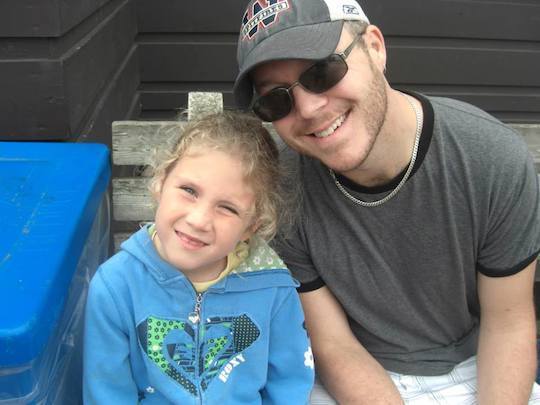
Thank you all for such an amazing transformation. I am just at the beginning, but the steps I have taken so far are just amazing. I could not have done it without Mark’s Daily Apple!
Ian





October 30, 2014
Are You Sacrificing Your Health?
 There’s that saying people throw out when a hypothetical situation is profoundly unappealing or flat-out unconscionable to them – “Not for a million dollars…”. Not for a million dollars. Not for ten million. Not for…what? Think for a second and identify the most important, precious, valuable principles and priorities that you wouldn’t sacrifice for anything in the world. Got ‘em? Let me ask this: does your health make the list?
There’s that saying people throw out when a hypothetical situation is profoundly unappealing or flat-out unconscionable to them – “Not for a million dollars…”. Not for a million dollars. Not for ten million. Not for…what? Think for a second and identify the most important, precious, valuable principles and priorities that you wouldn’t sacrifice for anything in the world. Got ‘em? Let me ask this: does your health make the list?
If it did, think about how you got to this point. How and when did you decide your health was so comparatively critical? How have you arranged your life to live that priority each day? What’s been a fairly simple adaptation, and what’s required genuine compromise? What options have you been obliged to reject? What people have you disappointed as a direct/indirect result? And what have been the benefits that keep you committed? If health didn’t make your list, let’s put the obvious on the table. Honesty congratulated, why didn’t it register?
It’s true we pay lip service to health every day as a country and as individuals. Walk down the street, and you’ll see public health messages on the sides of buses and bus stops. You’ll see rental bikes to encourage active commuting. Regardless of these messages and resources, however, our populace isn’t buying it. According to the CDC, fewer than 20% of Americans get the baseline recommended 2.5 hours of physical activity in an entire week. (That’s 2.5 hours out of 168 total, folks.) Less than 30% of people in most areas of the country eat three or more vegetables per day. (PDF) On the flip side of that equation, the American diet is now comprised of 70% processed food. Nearly 50% of Americans surveyed admitted knowing they were sleep deprived, and half of these people reported doing nothing to change their behavior.
It’s all about where the rubber meets the road….
So what are the reasons we can’t seem to follow through? Despite health being arguably the most important and fundamental thing in our lives, for what are we willing to sacrifice it every day? Consider the excuses and defenses you have offered as justification in not showing up for your health each day.
“I can’t find time for exercise because I’m too busy with work.”
“When I get home from a long day, I can’t make my own dinners every night. I need down time. If I have to do one more thing, I’m going to burst.”
“My commute during the week and family obligations on the weekend make cooking ahead impossible.”
“My job schedule is crazy. Getting enough sleep is just not possible on a swing shift.”
“The kids overtake my day, and time for working out just slips by.”
“I don’t sleep well, and everything ends up snowballing from there. I know I have some minor health issues, but there’s no time with a family crisis going on for me to deal with them now.”
All these reasons of being too busy with work, of needing downtime, of having too long of a commute, of needing to spend time with the kids are red herrings for larger questions we don’t want to address. Why do we stay in a job that requires such a long commute or so many extra hours? Why are we afraid/unwilling/unable to ask for enough help in caring for children that we can take care of ourselves? Why is it we have such difficulty drawing reasonable boundaries around work, social obligations or close family – especially during complicated times? If we don’t have time for ourselves today, when exactly do we envision ever making ourselves a priority? When will we begin respecting our own needs?
The fact is, in most of these circumstances, most of us have a choice. It may not be the most attractive choice, the easiest choice, the most socially acceptable choice, but it’s an option when we’re designing our daily life and the larger shifts that influence it. If we truly value our health, I’d brazenly propose that our health actually be a concrete consideration for our decision making.
I suspect that there’s a certain degree of magical thinking in the back of many people’s minds – the irrational belief that some other force or turn of circumstances will intervene and save the day (and state of their health) and prevent them from really getting into the trouble they’ve been warned about all along.
With every detrimental choice, however, we feed a physiological chaos that over time becomes a defining force in our lives. The bigger it gets, the more of an excuse it becomes. Eventually, when the hammer comes down, we throw up our hands as if we had no way of knowing what was truly coming, let alone ability to prevent it. The truth is, most of us had the power – and even enough knowledge – all along. We knew on some level what we had to do. It was a matter of not choosing to do it and maybe playing a serious game of chicken along the way, seeing if we could keep ahead of eventual outcomes.
So often, however, we tell ourselves we had no other choices. Our job demanded our time. Our children needed our full attention. A spouse was out of work for months, and anything else seemed like an inappropriate focus. A parent was ill and needed care or visitation. Our volunteer commitments needed us because who else was going to do the work? We get caught up in the belief that the world hinges on our presence, and guess what we give up – our ability to live a long, vital, healthy life. How is this reasonable?
There’s something definitely sabotaging and perhaps moderately (albeit unintentionally) disingenuous about someone who professes to take care of others but not him/herself. We want to think of ourselves as doing the “right” thing in this situation – putting off our own needs indefinitely, tending to others – whether it’s our beloved children who depend on us or the office department/PTA committee who wouldn’t bother coming to our funerals. What we end up offering these people is something that isn’t really ours to give. Giving today’s energy is one thing. Giving the well-being that is supposed to create tomorrow’s energy is another story.
Call this harsh, but I think we sacrifice a certain integrity in our lives when we continually shortchange our bodies. In a certain light, it’s akin to not paying the bill for our daily physical existence, living according to these other dictates and priorities as we dodge what we owe our physical forms. Sure enough, we accumulate arrears – back payments in the form of sleep and nutrient deficits, muscle wasting, dwindling bone density, toxin accumulation.
The inconvenient fact is, not every set of circumstances, not every job, not every lifestyle option is conducive to our health and well-being. The choice is ours which one of these we will sacrifice. We too often shrink from asking bigger questions, taking more substantial challenges, upending more significant patterns because we’re afraid. We want the pieces to stay in place. We can’t imagine a scenario in which they’re not.
But our bodies don’t care about those illusions. They either get what they need – or they don’t. The outcome is pretty clear either way. What’s truly sacred in our lives versus what is ultimately worth sacrificing – a particular house or location, a specific job, the existing parenting or chore division with our spouse, our current definition of downtime, a status quo schedule – or our good health? What will you envision?
Thanks for reading, everyone. Let me know your thoughts, and have a great end to the week.
You CAN Lose Weight and Get Healthy. Find Out How>>




October 29, 2014
Better Than a Marathon: The 1 Mile Challenge
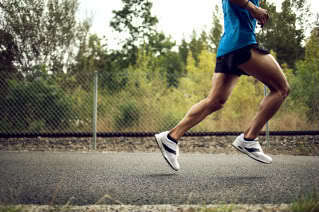 If you wanted schoolyard acclaim at my middle school, you didn’t bother with how much you could bench, how many pullups you could do, or how far you could throw a football. And you certainly didn’t bother with running a marathon. The true path to lasting seventh grade athletic immortality ran a mile in length. If you could break six minutes, you were fast. Break five and a half? You were elite. Once a week during PE, we’d line up on the track to test our mettle. Coach’d say go, click his stopwatch, and we were off chasing glory. You’d run and you’d run until you got to that final leg where you’d kick without even knowing it and propel your body past your rival to beat him and your own time. The mile was special.
If you wanted schoolyard acclaim at my middle school, you didn’t bother with how much you could bench, how many pullups you could do, or how far you could throw a football. And you certainly didn’t bother with running a marathon. The true path to lasting seventh grade athletic immortality ran a mile in length. If you could break six minutes, you were fast. Break five and a half? You were elite. Once a week during PE, we’d line up on the track to test our mettle. Coach’d say go, click his stopwatch, and we were off chasing glory. You’d run and you’d run until you got to that final leg where you’d kick without even knowing it and propel your body past your rival to beat him and your own time. The mile was special.
It proved useful in high school, too. My first year there, I was smart enough to place out of a few classes and ended up in an all-senior PE class, where I got towel-whipped and tit-twisted to the point of bleeding. But once spring track season rolled around, I became the top point man on the varsity squad by routinely trouncing the opposition in the mile and 2-mile runs, and sometimes the pole vault. This gave me cred. The locker room hazing stopped. I’d found my calling – running.
Of course, I ditched the mile run to chase glory in the marathon and later the triathlon. I sometimes wish I’d never graduated past the mile, but then I might not be here writing to you. What happened to me and my body throughout years of chronic cardio was probably necessary to make me who I am today.
Since going Primal and giving up the vast majority of my endurance training, I’ve found value in revisiting my old chum, the mile run. You guys should do the same.
Here’s why I think the mile run is the ideal distance for most people to run who aren’t training for any specific longer distance event:
It’s short enough that you can really push yourself. If you want to push yourself hard in a marathon, you need to train for it. You need to devote your life to it. If you want to push yourself hard in a single mile run, you just need to do it. The mile is very democratic.
It isn’t long enough to impede your other training. A mile fits nicely in with any kind of training program. If you’re a CrossFitter, integrate the mile run into one of your metcons. If you’re lifting with barbells, run a mile once a week to keep your conditioning up; it won’t degrade your gains like a 10k might.
It isn’t Chronic Cardio. A mile run is self-limiting. You can’t do much damage in a mile. The danger grows when you start stacking up mile after mile after mile, but the occasional or regular single mile run won’t put you in danger of lapsing into chronic exercise patterns.
It’s a good way to measure overall cardiovascular fitness and risk for cardiovascular disease. A 2011 study in middle aged men found that a single mile run test was a fair predictor of future CHD mortality. Men in their 50s who could run a mile in 8 minutes had optimal cardiovascular health and a 10% lifetime risk of heart disease; 10 minute milers had a 30% risk. Get better at running a mile and you’ll probably improve your heart health.
If you run them easily (10-minute mile pace), you can do them almost every day and obtain huge benefits. Research shows that 5-6 miles a week of easy running is associated with drastically lower risks of heart disease.
A mile is about as long as you’ll have to run in a real life situation. We’re no longer persistence hunting (which, remember, involved a ton of walking and resting anyway) for our food. We’re jogging through city streets to escape the rain. We’re running back to our apartment because we forgot something. And in my experience, these spontaneous bouts of running never go longer than a mile. If you can easily and somewhat quickly run a mile, you’re covered.
Your kids can join in. If you have kids, they’re precluded from many workout routines. You don’t want your toddler trying to life a barbell (yet). You’d rather your slobbery tyke not try to swing a kettlebell. But a mile is doable, albeit slower than if you were alone. Heck, if you let most kids have their run of the land, they’ll cover a mile on their own just going in circles.
Bottom line: the mile run is a simple way to test your fitness levels that requires very little time or training.
Okay. You’re sold. But how do you get started?
The simplest way to improve your mile time is to run the mile once or twice a week on top of your regularly scheduled training. Then, every six weeks or so, try an all-out mile where you attempt to beat your previous time. It’s easy like that. You don’t have to map out your month in advance like marathoners do. You don’t need to worry too much about specific macronutrient ratios. You just run the thing. But, if you want to get a little more specific, these workouts can help:
6 x 3 min work efforts at 15k race pace with 30 second rest intervals: The 3 minute work efforts are much slower than mile race pace. Envision the pace you could hold if you went all out for around an hour.
40 s effort/20 s recovery at 5k race pace repeating for 10 minutes: Running 40 seconds at 5k race pace isn’t that hard and by the time you start feeling it the 40 seconds is up and you get to jog for 20. By the 8 or 9 minute mark, you’ll feel some difficulty holding your 5k race pace, which is why the workout only lasts 10 minutes.
HIIT miles: Instead of running the entire time, try staggering the running with walking. Run really fast for 30 seconds, then walk for 30 seconds. Repeat until the mile is done. Use any permutation of run/walk you prefer. 15/45, 10/20, it all works. Have fun with it.
400/800 m repeats: Run intervals once a week, alternating between 400 and 800 meter repeats from session to session. Take 2-3 minutes rest in between, and try to keep moving (walk or jog). On a scale of 1-20 with 20 being the most intense, keep the intensity at about a 14-16. Start with as many rounds as you can comfortably complete, even if that’s just one or two. When you find you can “sprint” each repeat, add another round next time.
Hills: Find a nice steep incline that stretches for a while. Walk most of it at a really brisk pace, then sprint the last leg. Do this on a regular basis and try to progressively increase the distance of the final sprint.
All forms of sprints have a place, but specificity counts for more. To run well you still have to, well, run. Just not as much as we used to think, and even less so when it comes to the mile.
Consider this a formal challenge: I want you to run a mile. Record your time, and then go out and improve on it.
Are you currently running a mile regularly? If so, what’s your time? Let’s hear all about it!
You CAN Lose Weight and Get Healthy. Find Out How>>




October 28, 2014
G’Day, Australia – The Primal Hotbed
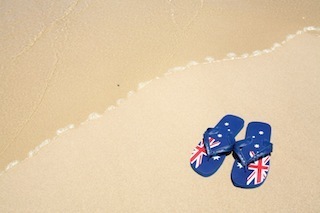 Something beautiful is happening across the Pacific Ocean. For years, I’ve sensed a strange Primal energy coming off the waves that pound the Malibu coastline, carried across the water from a distant nation whose people have embraced ancestral health and fitness more vociferously than any other. The citizens of this country read my blog, attend PrimalCons, and take the PB Expert Certification course in disproportionate numbers relative to their population. A revolutionary chain of Primal cafes – THR1VE – has sprung up around the major cities, offering breakfast and lunch bowls, healthy smoothies and coffee blends, and to-go fare whose ingredients you don’t have to second guess. The climate ranges from gorgeous coastline to tropical rainforest to expansive desert to Mediterranean mildness, promoting, enabling, and basically shoving nature appreciation down their collective throats. And that universal bellwether of widespread paleo acceptance, the emergence of the CrossFit box, has exploded across the country. Australians may be thousands of miles away, but they feel pretty close to me.
Something beautiful is happening across the Pacific Ocean. For years, I’ve sensed a strange Primal energy coming off the waves that pound the Malibu coastline, carried across the water from a distant nation whose people have embraced ancestral health and fitness more vociferously than any other. The citizens of this country read my blog, attend PrimalCons, and take the PB Expert Certification course in disproportionate numbers relative to their population. A revolutionary chain of Primal cafes – THR1VE – has sprung up around the major cities, offering breakfast and lunch bowls, healthy smoothies and coffee blends, and to-go fare whose ingredients you don’t have to second guess. The climate ranges from gorgeous coastline to tropical rainforest to expansive desert to Mediterranean mildness, promoting, enabling, and basically shoving nature appreciation down their collective throats. And that universal bellwether of widespread paleo acceptance, the emergence of the CrossFit box, has exploded across the country. Australians may be thousands of miles away, but they feel pretty close to me.
Why, though? What makes Australia such a hotbed for the Primal lifestyle? Several national characteristics converge to explain its unique and special relationship with ancestral health.
Food Culture
Australia is a young nation that hasn’t had much time to develop a single overarching national food culture or cuisine (insert “shrimp on barbie” joke here). Unfortunate? No. That’s what makes Australia so amenable to the Primal way of eating. It’s a nation of immigrants, beginning from the indigenous explorers 50,000 years ago and European settlers two centuries ago to the ongoing waves of Brits, Kiwis, Chinese, Indians, Sri Lankans, Vietnamese, Turks, Papua New Guineans, Italians, and every other ethnicity that makes its way over. As a result, Australian food culture is a mashup of cultural influences representing the various waves of immigration into the country, priming Australians for radical new ideas in food – even something as crazy as eating like your ancestors and ditching grains.
It doesn’t hurt that the local meat and seafood are incredible. Lamb and beef are everywhere, and they’re good and inexpensive and mostly pastured on the grasslands available year round. And seeing as how it’s the largest island in the world, the access to high-quality wild-caught and ocean-farmed seafood is unparalleled. It isn’t hard to stay Primal in Australia. You almost hit it by default.
Sporting and Outdoors Culture
Despite the size of the island (approximately 90% of the continental United States), it’s sparsely populated with under 24 million people, 85% of whom live within 30 miles of the coast. Average earnings are higher than most, giving the general population a hefty dose of disposable income. Australian income is more widely distributed with fewer extreme highs and lows than the US, and workers are guaranteed at least 28 paid vacation days each year.
Couple the proximity to beautiful beaches and open outdoor spaces with year-round sunshine, plenty of disposable income, and enough time off to enjoy it and you get a population that loves to play and exercise. Sure enough, the majority of the population, young and old alike, participates in “sport and physical recreation.” Heck, almost 50% of the seniors in Australia are regularly playing sports, hiking, swimming, and enjoying the great outdoors. And in Olympic sports, Australia consistently ranks well above its per capita position. They absolutely kill it in swimming.
Also, there’s just something special about the mindset of the Australian athlete. For decades, they’ve dominated the sport of triathlon. And throughout all my years, I’ve never met an uptight one. Intense? Yes. Competitive? Absolutely. But never obsessive compulsive or nursing a fragile psyche like so many of the elite athletes from the US or other developed nations I faced. Instead, they embodied this compelling blend of “no worries, mate” surfer-dude relaxedness, competitive intensity, and strong work ethic that made them tough to beat. They didn’t like losing, but losing didn’t ruin their day like it did, well, mine.
So, while Australians have always embraced physical culture and share an intense interest in diet and lifestyle interventions that improve how they look, feel, and perform, they also recognize the importance of taking it easy and enjoying life. When a leisurely day at the beach always awaits, it’s tough to lapse into chronic exercise patterns.
Affinity for America
The Primal/paleo movement has its roots in the United States. In some countries, that makes it a hard sell. Not to Australians, who’ve always had a strong cultural affinity with America bordering on love affair. They’ve long turned to the US for innovation in technology, media, fashion, and music, so acceptance of American ideas about diet and health and fitness are a natural extension of that. Even during the last decade when Aussie public sentiment was against sending troops to war, the popular support for the political and cultural alliance between our countries never wavered.
Growing Health Concerns
Healthwise, Australia is better off than the United States. Life expectancy is in the global top ten. Physical culture remains strong and continues to grow. On the other hand, the progressive increase in processed food consumption, added sugars, and industrial seed and vegetable oils, is leading Australia down a similar path to the US with a somewhat “barbell’ distribution when it comes to health and wellness. Obesity is rising faster in Australia than any other country, and diabetes is the fastest rising chronic disease.
Australia’s universal single payer health care system, a sort of Medicare for all, wields considerable power and offers distinct advantages of scale when dealing with problems of this magnitude, but the collective still has to pay for individual bad choices. And with rising rates of diabetes, obesity, and other chronic conditions that increase health care spending, individuals appear to be making a lot more bad choices. Australians will soon have to shoulder a much larger load than they’re accustomed to paying unless something changes.
 Well, something’s changing. As I’ve just laid out, the ancestral health movement is going full-bore in Australia. And next March 13-15, 2015, the team at THR1VE will be putting on an ancestral health event rivaled only by PrimalCon itself: the THR1VE.me Symposium. I met Josh Sparks, the founder of THR1VE, at PrimalCon Tulum last March. We hit it off, and apparently the whole shebang really rubbed off on him because he said the energy and vitality and community he felt in Tulum inspired him to bring the same thing to Australia. I’d say he’s on the right track. It’s going to be a blast and it will cement the strength of the movement in that part of the world.
Well, something’s changing. As I’ve just laid out, the ancestral health movement is going full-bore in Australia. And next March 13-15, 2015, the team at THR1VE will be putting on an ancestral health event rivaled only by PrimalCon itself: the THR1VE.me Symposium. I met Josh Sparks, the founder of THR1VE, at PrimalCon Tulum last March. We hit it off, and apparently the whole shebang really rubbed off on him because he said the energy and vitality and community he felt in Tulum inspired him to bring the same thing to Australia. I’d say he’s on the right track. It’s going to be a blast and it will cement the strength of the movement in that part of the world.
You’ve got an all-inclusive, world-class resort.
You’ve got one of the most famous and well-regarded beaches in the world, Manly Beach, right outside your room.
You’ve got face-to-face access to the top paleo rockstars of Australia, like Dan Churchill (The Healthy Cook), Billy Telfer of Team Tarzan, Luke and Scott of The Bondi Boys, and many more.
You’ve got Darryl Edwards, the master of Primal play.
You’ve got a 5 star kitchen serving up Primal-friendly local and seasonal produce.
You’ve got this dude named Mark Sission, I think, who’s supposed to be interesting.
What are you waiting for? Buy your tickets. If you’re anywhere near Australia or New Zealand and you’re reading this blog, you need to be at THR1VE.me. And if you live a bit farther away, that’s fine. You get to be the one with the funny accent that everyone is dying to meet.
And as an extra bonus, if you sign up for the symposium, I’ve also thrown in a discount code for the Primal Blueprint Expert Certification.
Australia is ripe for transformative, disruptive health movements that make sense and actually work. This is one, and it’s just the start of it. I’ll see you guys there.
Thanks for reading, everyone. If I’ve got any Aussie or New Zealand readers (I know I do), let’s hear about it in the comments! Are you going to make it to the THR1VE Symposium?




October 27, 2014
Dear Mark: Can’t Afford Good Meat, Allergy or Preference, Cold Pasta, and Protein in Pregnancy
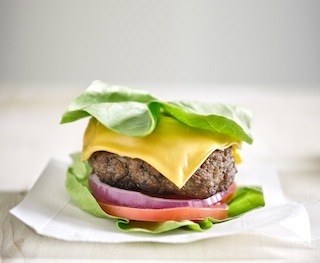 For today’s edition of Dear Mark, we’ve got a four-parter. First up, how does a person hope to maintain a Primal lifestyle if they can’t afford pastured meats and eggs and are unwilling to eat factory-farmed meat? Is it possible? Yes; read on. Next, what’s the deal with waiters asking if we’re avoiding bread because of “preference” or “allergy”? What’s it to ‘em? Third, should Primal people care about the recent study showing a reduced blood glucose response after eating leftover pasta? We should, and I’ll explain why. Finally, how should a husband counsel a pregnant wife who wants nothing to do with mammal meat? I give a few tips.
For today’s edition of Dear Mark, we’ve got a four-parter. First up, how does a person hope to maintain a Primal lifestyle if they can’t afford pastured meats and eggs and are unwilling to eat factory-farmed meat? Is it possible? Yes; read on. Next, what’s the deal with waiters asking if we’re avoiding bread because of “preference” or “allergy”? What’s it to ‘em? Third, should Primal people care about the recent study showing a reduced blood glucose response after eating leftover pasta? We should, and I’ll explain why. Finally, how should a husband counsel a pregnant wife who wants nothing to do with mammal meat? I give a few tips.
Let’s go:
I got into the paleo/primal way of eating while I was living with my boyfriend. I lived with him for a few months but he paid for all the groceries. He only buys organic produce and organic grass fed/pasture raised meats. I always knew eating organic was expensive but I didn’t realize just how unaffordable it is until I went back to living alone! Unfortunately I cannot afford to buy all organic and grass fed but I don’t want to eat conventional. I refuse to eat meat that comes from abused, factory farmed animals that are pumped up with hormones and are fed GMO grains. Not only is it a health concern, but also a moral concern. Since living alone I’ve started eating conventional veggies (except for the dirty dozen; I try my best to buy those organic) but I have drastically lowered my meat intake. Unfortunately I can only afford to buy grass fed ground beef at Ralph’s when its on sale (but when it is, I buy it in bulk!). However, I’m not eating nearly enough as I should be. My portions are all very small and sometimes I go a few days without eating meat. I try to eat eggs to fill in the protein gaps but pasture raised eggs are fairly expensive too. I’ve lost too much weight and need to find a way to eat more without breaking the bank. I simply cannot afford this lifestyle on my salary. What do you suggest?
Thanks,
Kara
My wife was a vegetarian for decades. Yep, Mrs. Grok herself was an avowed vegetarian and then pescetarian up until about a year ago, when she began eating land animals. She was completely healthy. She feels like she’s gotten even healthier since introducing meat, of course, but you can absolutely do it well without meat. My son is also a vegetarian (for similar reasons as you) who obtains most of his protein from ample amounts of dairy and eggs. He’s lean, fit, happy, healthy, and a natural athlete. No worse for wear in either case.
I place huge importance on personal ethics. You could force yourself to eat cheaper CAFO meat and eggs, and your body might benefit from the added protein and fat and micronutrients, but your mind and spirit would suffer. And eventually, your body would suffer, too, because you can’t neglect that other side of your being. You must be true to yourself or you’ll wither away into a husk.
Exhaust your options before giving up. Check out local farmer’s markets for deals, search Craigslist for people selling meat or eggs, look for farms near you on Eat Wild who might sell meat in bulk, try to get in on a cowpool. What you can find nearby might surprise you.
Don’t neglect organ meats, either. Organic chicken and grass-fed beef livers are usually under $4 or $5 per pound, and a little bit goes a long way. You can’t eat liver every day (too much vitamin A!), but once or twice a week is a great way to get highly nutritious and ethical animal food into your diet without going broke.
Same with dairy. If you tolerate it, grass-fed or pasture-raised dairy can be a very healthy and less expensive addition to your diet – calorie for calorie.
Of course, the Primal lifestyle doesn’t have to be a meat fest. Nor should it. Eat more safe starches. Go for sweet potatoes, white potatoes, starchy squash, fruits, beets, anything you can get your hands on. A five pound bag of white potatoes, even organic ones, isn’t more than $5 and provides a ton of calories and nutrients (more than you’d think; white potatoes are actually quite nutrient-dense, contrary to popular belief).
Should everyone go out and do Primal this way? No, especially not an overweight person hoping to lose weight. But you’re losing “too much weight.” You need the calories and the carbs won’t be a problem.
Always remember, too, that this is a lifestyle (as you mentioned) and it’s not just about the food. Being Primal is about being outside in nature, exercising sanely, going barefoot when the opportunity presents itself, getting sun and sleep and social contact with people who care about you, laughing, stimulating your mind and body. And yeah, it’s about eating good food. “Humanely-raised grass-fed meat and poultry” are important. They’re not everything, though.
Hi Mark!
Recently when I request a burger without a bun at fast food restaurants I’m asked whether this is an allergy or preference – but the cashier never knows why or what the difference is. Can you give any insight into this new phenomenon?
Hannah
Sure:
If it’s an allergy, the kitchen staff needs to be extremely fastidious about avoiding cross-contamination. They’ll use separate knives, pans, cutting boards, and anything else that might come into contact with the allergenic food.
If it’s a preference, they won’t bother with all that stuff. They won’t go out of their way to keep the kitchen tools separate.
I recommend going with “preference,” if you don’t have a medical issue with microscopic bread particulates. If I’m ever in that situation, I say “preference.” I’d rather not inconvenience the staff, and I want the best meal possible. After all, you’re at the mercy of the people who prepare your food. Making them unnecessarily clean a brand new cutting board and knife can really grind things to a halt, affect the kitchen flow, and convince the chef that you deserve the smallest, stringiest lamb shank in the pot or the oldest steak in the fridge.
If you’re truly sensitive to any level of contamination, go with “allergy.”
Did you see this?:
http://www.bbc.com/news/magazine-2962...
Michael
Yeah, I saw that a couple weeks back. Pretty cool. Works with bread, too. Freezing your bread increases the resistant starch content and lowers the blood glucose when you eat it. Even toasting bread lowers the glucose spike.
And even though you guys probably aren’t eating pasta, cold or not, and might be thinking, “So what if leftover pasta isn’t as bad as fresh hot pasta? I don’t eat the stuff to begin with!” – this development is still relevant. Many of you have asked about the impact reheating has on the resistant starch content of cooked and cooled potatoes. Well, if this is any indication, reheating your potatoes won’t just leave the RS untouched; it’ll actually increase it and further depress the blood glucose response.
All the more reason to keep precooked spuds in your fridge for easy peeling, slicing, and light sautéing. Nothing better than french fries that feed your gut bacteria and don’t spike your blood glucose (as much).
Hi Mark,
My wife is just a few weeks pregnant, and I want to make sure she’s getting the best nutrition possible within our/her means. The biggest issue for me is that she’s just not much of a meat eater, usually limited to [organic] poultry, eggs and the occasional bit of shrimp or crab. But she’s definitely not adverse to grass-fed butter, coconut and olive oil, which we use liberally.
Do you think it’s OK to drop the protein push if she’s getting enough good-quality fat (along with plenty of organic produce)? Or should she make sure to get a specific amount of protein? She does eat quite a bit of carbs, but overall she’s not really an over-eater by any means.
Cheers,
Chris
Drop the protein push. In my experience, the last thing you want to do as a husband married to a very pregnant wife is bug her about not eating this or that. And despite the incessant push for pregnant women to eat more and more protein, more isn’t always better. Studies of hunter gatherers and non-human primates have found a ceiling for protein intake during pregnancy: 25% of calories.
Studies of various protein intakes during pregnancy show that both “isocaloric protein supplementation” (where either fat or carbs are swapped out for protein) and “high protein supplementation” (where protein is increased to 25% or more of total calories) are associated with reduced birthweight and a higher risk of having a small for gestational age baby (SGA). As you undoubtedly know, underweight babies are at a greater risk for health issues, even later in life. One study even found that the offspring of mothers on a high-protein pregnancy diet were more susceptible to stress and released more cortisol when exposed to psychological stressors than offspring of mothers on a lower (but not “low”) protein diet.
“Balanced protein energy supplementation” (where you eat sufficient protein and overall calories while keeping protein under 25% of calories) is the way to go. Particularly in undernourished pregnant women, it decreases the risk of SGA.
That’s not to say that protein is bad. 10-20% of calories is probably close to ideal. A recent study even found that maternal protein intake in the first trimester was associated with bone mass of the kid by age six; higher protein intakes predicted better bone development. Of course, the population examined were ethnic Dutch, who have the 3rd highest per capita consumption of dairy in the world. For this study, high protein intake probably means high dairy intake, and dairy is extremely good for bone development, containing the pro-bone nutrients calcium, phosphorus, and vitamin K2. It’s unclear if high maternal protein intake from other sources would have similar effects on child bone development.
There are plenty of ways to get adequate protein during pregnancy that don’t involve meat. How about dairy, like the Dutch?
If your wife’s cool with dairy (the liberal use of butter tells me she is), do that. Yogurt, kefir, good cheese, milk (a glass of grass-fed whole milk with a tablespoon of blackstrap molasses provides whopping doses of critical pregnancy nutrients like calcium, magnesium, and potassium, plus the protein). Another benefit is that dairy during pregnancy seems to reduce the incidence of asthma and eczema in the offspring.
How about a sample day?
3 eggs for breakfast – 18 grams
Cup of yogurt for a snack – 12 grams
3 ounces shrimp with lunch – 24 grams
2 ounces of gouda (high in vitamin K2) with lunch – 14 grams
4 ounces chicken thigh for dinner – 28 grams
Glass of milk before bed – 8 grams
For a total of 104 grams of protein, which is more than plenty. That’s doable, wouldn’t you say? Good luck with everything and let your wife’s appetite guide her protein intake. The body knows what it’s doing and what it needs. Whatever happens, I’m sure you’ll have a healthy baby.
Thanks for reading, everyone! Be sure to include any comments, questions, or advice below!





October 26, 2014
Weekend Link Love – Edition 319
 We’ve got a cool new tool on Mark’s Daily Apple that you might find handy. Check it out.
We’ve got a cool new tool on Mark’s Daily Apple that you might find handy. Check it out.
Death By Food Pyramid, Denise Minger’s exposé of the shady science of nutrition in this country, is now available in audiobook format on Amazon and Audible.
I had a great chat with Tom Woods on the Tom Woods Show. Go give it a listen on iTunes or YouTube.
Research of the Week
Exposure to antibiotics in utero increases the risk of childhood obesity.
Your season of birth may affect your risk of mood disorders.
New Primal Blueprint Podcasts
Episode 39: Interview with Vinnie Tortorich, America’s Angriest Trainer: Host Brad Kearns talks to Vinnie Tortorich, “America’s Angriest Trainer!” Vinnie is a popular Hollywood trainer known for helping celebs drop weight quickly with his simple, no-nonsense NSNG strategy (No Sugar, No Grains).
Each week, select Mark’s Daily Apple blog posts are prepared as Primal Blueprint Podcasts. Need to catch up on reading, but don’t have the time? Prefer to listen to articles while on the go? Check out the new blog post podcasts below, and subscribe to the Primal Blueprint Podcast here so you never miss an episode.
Are Elite Athletes Inadvertently Training Like Grok?
Are Video Games Good or Bad For Us?
The Definitive Guide to Fats
How Your Primal Connection to Water Runs Deeper Than Thirst
Interesting Blog Posts
Are pathogens influencing our behavior?
On the race to nowhere in youth sports.
Media, Schmedia
As it turns out, inhalation of aerosolized CAFO pig brain tissue isn’t a very good idea.
Thirteen of the toughest, most extreme races on Earth. Would you try any of them?
Everything Else
What do organic foodies really think about McDonald’s?
The benefits of learning – or knowing – multiple languages.
How breeding changed corn, peaches, and watermelon.
The strange and unlikely story of color vision
Yet another despot is toppled.
Recipe Corner
The beet goes on.
It might be impossible to say “mushroom fricassee with butternut squash fondant” without sounding like a snob, but man, is it tasty.
Time Capsule
One year ago (Oct 26 – Nov 1)
Rethinking Stress: It Could Save Your Life – How to not stress about stress.
Managing Cravings: Strategies to Stay the Primal Course – Cravings can be difficult to handle alone. Here are some helpful strategies.
Comment of the Week
“you have more glycogen left over than the next guy who’s bonking…”
Er…in the UK, um, we don’t treat that sort of thing as a competitive sport…
(Embarrassed silence. Then recommends British dictionary to Sisson)
– You know, I almost prefer reading it with the British meaning.
You CAN Lose Weight and Get Healthy. Find Out How>>




October 25, 2014
“Matambre” Rolled Flank Steak
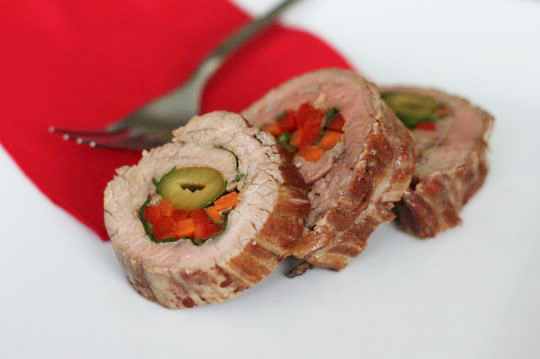 “Matambre” loosely translates to “kill hunger” and that’s exactly what this meal of meat and veggies rolled into one will do.
“Matambre” loosely translates to “kill hunger” and that’s exactly what this meal of meat and veggies rolled into one will do.
Traditional fillings for this South American dish include garlic, spinach, bell pepper, carrots, olives, hardboiled eggs and fresh herbs. But you can, and should, stuff whatever you like inside the rolled and sliced steak.
Matambre is usually cooked on a grill or simmered in wine and broth for more than an hour, but this recipe takes a shortcut by simply searing and then roasting the meat for 30 minutes in the oven. Using this method, the meat is cooked to medium-rare and the veggies inside maintain some of their crispness.
Sliced matambre is usually eaten at room temperature, making it the perfect lunchbox substitution for a sandwich. Protein and veggies in every delicious bite, no utensils required.
Servings: 4
Time in the Kitchen: 1 hour
Ingredients:
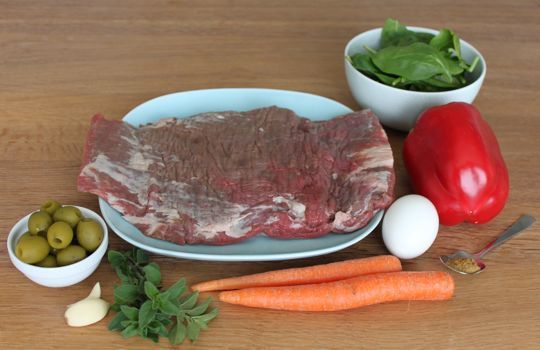
1 1/2 to 2 pounds flank steak (680 to 900 g)
2 garlic cloves, finely chopped
1 teaspoon ground cumin (5 ml)
1 tablespoon fresh oregano or other herb, chopped (15 ml)
2 large handfuls baby spinach leaves
1 red bell pepper, cut into thin strips
1 to 2 carrots, cut into thin sticks
1 to 2 hard boiled eggs, sliced or left whole
1/2 cup pitted green olives (120 ml)
Salt and pepper
Instructions:
Ask the butcher to butterfly the flank steak so it becomes a larger, thinner piece of meat or butterfly the flank steak yourself by slicing horizontally through the meat almost all the way to the end, then open it like a book. You can begin cutting on one side and working your way across or start by making a shallow cut in the middle of the piece meat, about halfway down through the thickness of the meat, and then work your way out to both sides.
If the meat is thicker in some parts than others, use a meat tenderizer to pound the meat to the same thickness.
Preheat oven to 350 ºF (177 ºC).
Sprinkle salt, pepper, garlic, cumin and oregano on one side of the meat.
In the middle of the meat, leaving a border of 1-2 inches (2.5 to 5 cm) on the top and bottom, evenly layer the spinach leaves, bell pepper, carrot, eggs and olives.
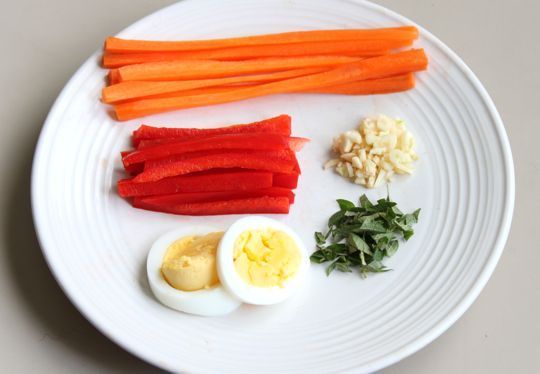
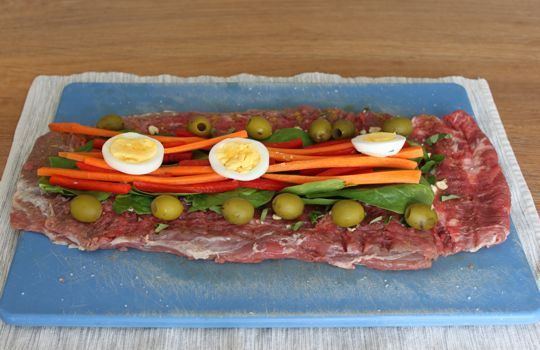
Roll up the flank steak along the long side to form a tight roll with the vegetables, egg and olives inside. Tie the roll up securely in several places with kitchen twine. Season the outside with salt and pepper.
In an ovenproof sauté pan, heat a drizzle of oil and sear the rolled flank steak on all sides until it’s nicely browned.
Transfer to the oven and roast uncovered for 25 to 30 minutes, or until a thermometer registers around 125 ºF (52 ºC).
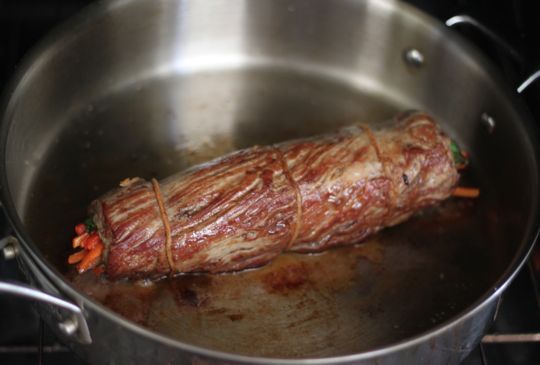
Remove the Matambre from the oven and let it rest until cooled. Transfer to a refrigerator to cool completely before slicing.

Not Sure What to Eat? Get the Primal Blueprint Meal Plan for Shopping Lists and Recipes Delivered Directly to Your Inbox Each Week




October 24, 2014
Skeptical Journalist Turned Primal Advocate
It’s Friday, everyone! And that means another Primal Blueprint Real Life Story from a Mark’s Daily Apple reader. If you have your own success story and would like to share it with me and the Mark’s Daily Apple community please contact me here. I’ll continue to publish these each Friday as long as they keep coming in. Thank you for reading!
 A few weeks ago, I had a doctor appointment with a new primary care physician. As the nurse took my blood pressure, he asked a series of questions, marking off my answers on his clipboard. Do you exercise regularly? Yes. Do you get adequate sleep? Yes. Are you on a diet? I paused. If you want to call it that, sure. It’s called paleo. He looked up quizzically. You know, what people ate before agriculture. Before diabetes. Before Monsanto. Before sunscreen. It’s not really a diet—it’s just people food.
A few weeks ago, I had a doctor appointment with a new primary care physician. As the nurse took my blood pressure, he asked a series of questions, marking off my answers on his clipboard. Do you exercise regularly? Yes. Do you get adequate sleep? Yes. Are you on a diet? I paused. If you want to call it that, sure. It’s called paleo. He looked up quizzically. You know, what people ate before agriculture. Before diabetes. Before Monsanto. Before sunscreen. It’s not really a diet—it’s just people food.
I didn’t always think this way.
During my freshman year of college, after I had already packed on 15 pounds, I decided vegetarianism sounded sexy. I had no idea what I was doing, but that didn’t stop me. It was more of an identity than anything, which made it much easier to sneak a grilled steak and charred peppers one evening while working as a camp counselor over the summer. It was one of the best meals of my life. That was until I joined some other counselors for a mountain biking trek over Lake Tahoe. After hours gasping for air at that elevation, we stripped to our underwear and bathed in the lake, dressed for dinner and collapsed into a booth overlooking the water. I ordered a burger. It must have weighed a pound. It was transcendent.
Unfortunately, I still kept up my vegetarian ways by day, which led to one of the worst summers of my life. Depression and anxiety were my constant companions. Psychosis would not be too strong a word. And, I was still fat. My diet was, admittedly, atrocious. I remember eating cinnamon rolls, brownies, dipped ice cream, and frozen pizza all summer, with a few iceberg lettuce salads tossed in for good measure.
After the summer, I came to my senses and acknowledged that I liked eating meat, so I dropped the act. My emotional health and weight improved somewhat.
Fast forward to my mid-20s. I had graduated with a degree in writing and married my college sweetheart. Anxiety and depression still haunted me. Medications had helped, but without health insurance, I was forced to approach it from a more holistic perspective. In desperation, I picked up a copy of Julia Ross’ book The Mood Cure at the health food store. In it, she advocates strongly for eating eggs, fish, meat, and other sources of protein and fat. She also identifies several “bad mood foods”—namely wheat, corn, sugar, soy, and industrial oils. (Sound familiar?) For the first time, I began to look with suspicion on wheat and dairy, though I didn’t remove either from my diet at the time. Nevertheless, I did notice a substantial improvement in my mental outlook by eating more protein and fat.
Emotionally, I felt better, but I still hung onto a few pounds from college and decided to tackle them the only way any child of the 80s knew how: step aerobics and cutting calories. I lost all of the weight and then some, but not without a substantial amount of insatiable hunger and dramatic mood swings. Just ask my husband.
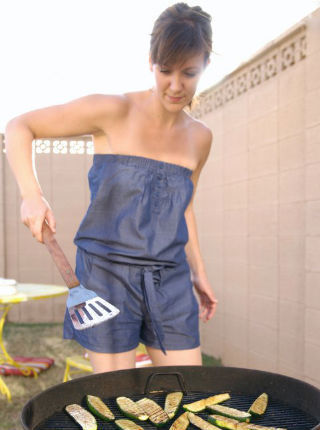 In my late 20s, I redirected my writing career toward health and fitness. I enrolled in a certification program to become a personal trainer. I hoped that in my study I would learn the secrets of weight loss and be able to convey this to others in my writing. However, the course material only proffered the conventional wisdom. Weight loss was a “calories in, calories out” equation. It had worked for me, sort of, so that’s what I went with.
In my late 20s, I redirected my writing career toward health and fitness. I enrolled in a certification program to become a personal trainer. I hoped that in my study I would learn the secrets of weight loss and be able to convey this to others in my writing. However, the course material only proffered the conventional wisdom. Weight loss was a “calories in, calories out” equation. It had worked for me, sort of, so that’s what I went with.
I began taking clients shortly after earning my certification while I built my writing portfolio. I remember working with one woman who was desperate to lose weight. She was in her mid-50s and carried about 30 excess pounds around her midsection. I did everything I knew to help her. We trained as many as three days a week. She did interval training. She lifted weights. She stayed active between workouts. She kept a food diary and limited herself to a mere 1,300 calories a day. I was sure she would be successful. After a month, I took her measurements. They hadn’t budged. I felt like I had failed her. How could calorie restriction not work? It was science. Hadn’t her visceral fat ever heard of the law of thermodynamics?
Around that time, I began writing for LIVESTRONG on health and fitness. I continued to toe the line of conventional wisdom on healthy whole grains and calorie restriction. I even explored veganism and created a vegan food blog.
After a few years writing for various health publications, I landed a position as a health and fitness editor at a web startup in Southern California. It was my dream job.
As I packed up my apartment, I also picked up a book a friend had recommended, Good Calories, Bad Calories, by Gary Taubes. I devoured it. Mind blown. No wonder my client wasn’t losing weight. No wonder I felt so miserable restricting calories and trying to burn fat through chronic cardio!
I was given a significant amount of editorial freedom in my new job and pursued as many interviews and covered as much emerging research as I could, inviting my writers to do the same. In the course of the job, I began exploring the paleo diet. I was skeptical. Didn’t cavemen die before their 30th birthday? In an effort to confirm that this was all just a fad—that was certainly the opinion of nearly every other health publication—I sent an email to UCLA’s evolutionary biology department and requested an interview. They directed me to Aaron Blaisdell PhD, founder of the Ancestral Health Society.
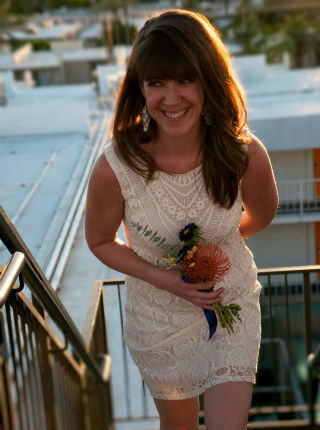 The interview forever altered my perspective and led me down a new path of understanding human biology. One of the things he said that resonated with me was, “Nutritionists say you cannot cut out a whole food group. But, a food group is a human convention, not a natural thing.”
The interview forever altered my perspective and led me down a new path of understanding human biology. One of the things he said that resonated with me was, “Nutritionists say you cannot cut out a whole food group. But, a food group is a human convention, not a natural thing.”
The idea of cutting out entire “food groups” had been disconcerting to me, but in my interaction with Professor Blaisdell, everything began to make sense.
And that clarity brought change.
I began by cutting out grains entirely (like most on this site, I had ditched gluten a few years earlier). Immediately, my energy levels skyrocketed. I was waking up eager to tackle the day. I also felt greater mental stability and peace. Throughout this initial period, I read many of Mark’s posts and slowly adapted my personal habits to those that would support my health. I began lifting much heavier weights. I found that building muscle is incredibly challenging; it certainly didn’t happen by accident.
Finally, I decided to give the Primal Blueprint 21-Day Challenge a try. Saying goodbye to half-and-half in my coffee was hard for a few days, but my palate adapted quickly. I saw an immediate and dramatic improvement in my skin. Previously, I had been a slave to full-coverage foundation and powder to cover blemishes and the consequent pigmentation. However, after ditching dairy, I soon skipped the powder and eventually switched to a tinted moisturizer alone. My skin just looked radiant—why hide it?
Saying goodbye to dairy also improved my gastrointestinal health—bloating and irregularity all but disappeared.
Initially, I was drawn to “paleo desserts” (an odd concept when you think about it), fruit, and nuts to fill the caloric void. My favorite snack was a paleo energy bar that combined dates, raisins, almonds, pecans, and dark chocolate and bound them together with almond butter and honey. Oh, it was good! Not surprisingly, I gained a couple pounds.
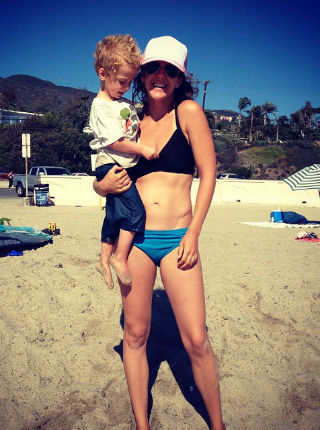 But, eventually, I took a serious look at the carbohydrate curve and planned ahead to make sure I was getting sufficient calories from meat and vegetables and healthy fats, such as avocado, coconut oil, and olive oil. That essentially eliminated my cravings for paleo sweets.
But, eventually, I took a serious look at the carbohydrate curve and planned ahead to make sure I was getting sufficient calories from meat and vegetables and healthy fats, such as avocado, coconut oil, and olive oil. That essentially eliminated my cravings for paleo sweets.
Although I didn’t approach primal living for weight loss, it has certainly improved my body composition. I have had two children via caesarian section and gained at least 30 pounds with each pregnancy. I think most women just expect that pregnancy relegates you to hang onto excess weight forever. It just isn’t true! The primal approach allows me to lead an active life, enjoy food, and feel good about my body. That said, I love that the primal approach is not about being less, it’s about more. More nutrients. More muscle. More life. That’s so attractive when most of the messaging to women is about being less—eating less and weighing less.
So here I am, nearly a year after my first honest look at the primal approach. I’m thrilled to say it is a sustainable way of life that I now share with everyone I can. And, my formerly vegan food blog is now devoted to scrumptious primal foods—you can visit me at PamelasModernFamilyTable.com.
Pamela





October 23, 2014
How to Accept Your Imperfections
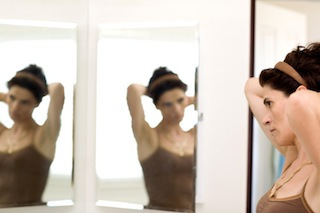 Some weeks ago in a Dear Mark column, the issues of unwanted weight, arm fat and aesthetic frustration were front and center. While people’s central reasons for going Primal vary, I don’t know of anyone who doesn’t enjoy looking slimmer and fitter. While some of us are unapologetically in it for the vanity spoils (not that there’s anything wrong with that), others of us might focus on health but secretly delight at the bonuses we see reflected in the mirror each day. Barring unaddressed hormonal issues and perhaps certain medical conditions, living Primally will help you lose fat, build muscle and look more vibrant. With time (and, for some folks, some tweaking), it will help you feel and look like a thriving version of yourself – your best, most awesome self. (We, of course, can’t help but end every week by showcasing all that awesomeness.) As much as we collectively and theoretically cheer this message, at times some of us might find ourselves privately disappointed that certain traits or patterns didn’t disappear with the added fat. As happy as we are to be lighter and fitter, now there’s no extra weight or low muscle tone to blame for certain features that maybe have made us insecure or just stuck in our craw for years. In all fairness, what do we do with these feelings? How do finally make peace with our inevitable imperfections?
Some weeks ago in a Dear Mark column, the issues of unwanted weight, arm fat and aesthetic frustration were front and center. While people’s central reasons for going Primal vary, I don’t know of anyone who doesn’t enjoy looking slimmer and fitter. While some of us are unapologetically in it for the vanity spoils (not that there’s anything wrong with that), others of us might focus on health but secretly delight at the bonuses we see reflected in the mirror each day. Barring unaddressed hormonal issues and perhaps certain medical conditions, living Primally will help you lose fat, build muscle and look more vibrant. With time (and, for some folks, some tweaking), it will help you feel and look like a thriving version of yourself – your best, most awesome self. (We, of course, can’t help but end every week by showcasing all that awesomeness.) As much as we collectively and theoretically cheer this message, at times some of us might find ourselves privately disappointed that certain traits or patterns didn’t disappear with the added fat. As happy as we are to be lighter and fitter, now there’s no extra weight or low muscle tone to blame for certain features that maybe have made us insecure or just stuck in our craw for years. In all fairness, what do we do with these feelings? How do finally make peace with our inevitable imperfections?
There’s the camp that would automatically claim you’re not at peace with yourself if you have an issue with your healthy body. While I get where they’re coming from and agree that this can be true for some people, I also don’t choose to write off these feelings that easily. In some respect, that perspective could itself be seen as its own form of shaming.
The fact is, I’ve known a lot of people who have been truly solid individuals – amazing men and women, fantastic parents and partners, confident professionals, genuine friends – who confess that certain things about their physique bother them. They don’t obsess over them, but the feelings exist as background static they notice on occasion. Yes, you could say they have it “all,” but there’s still that nagging source of vulnerability.
Vulnerability. I think there’s a essential point here. If we can see these thoughts in that light, we recognize two things. The first is that the problem is really our feelings/self-talk about the imperfections rather than the imperfections themselves. We attach judgments to the features we decide we don’t like (or that others have so generously took it upon themselves to criticize for us in the past), but in all objective reality, these features are generally speaking neutral traits.
Sure, societies appear to come up with their own, widely varying senses of ideal. More than at any other time in history, however, we’re surrounded by that “ideal” to the point that it’s perceived to some degree more as an average. The omnipresence of media displaces comparative real life perception here. Likewise, this “ideal” is further stylized through “developments” like backlighting, airbrushing and plastic surgery, etc., which only further throws off our true sense of average, let alone healthy. (Can you imagine Grok’s response here?) No wonder we feel disoriented about what’s physiologically normal.
Two, we understand with these feelings that we can bring compassion to that aspect of what is essentially part of our basic humanity. While there’s plenty of room to argue that looks or insecurity about them don’t hold as much sway in other contemporary cultures (including traditional societies), the basic fact remains we’re hominids operating emotionally and physically within a given social system. Blame that social system all you want (as I did above), but I’m still going to feel for the individual hominid. Our expectations these days are admittedly skewed and manipulated, but our emotional responses are genuine albeit often unhelpful. Suggestion 1: let yourself off the hook for feeling the way you do. That said, focus on the knowledge that this feeling is totally unproductive and fleeting if we let it be.
The thing is, we can accept our propensity to notice those personally bothersome features without feeding that propensity. Ultimately, we choose how much power we give our “imperfections.” How much of our mental bandwidth will we give away? What opportunities will we forgo? What intimacy will we restrict or not enjoy? How much time will we spend observing our bodies rather than relishing the freedom of being in them. There’s nothing wrong with wanting to look good, but it’s important at some point to think about what’s emotionally healthy for you as an individual.
I’ve written that one of the benefits of living Primally is looking good naked (LGN). You know, it was a passing comment in a blog post that took on a life of its own. It’s fun and provocative. It’s little wonder it got the attention it did, but let me be clear here. Looking good naked doesn’t read “looking perfect” naked (or clothed). (The statement begs the question, “Whose idea of perfection would we be talking about anyway?”) It doesn’t mean look like someone else other than yourself. How far away from our own physical reality do our expectations and desires keep us?
The shockingly brazen truth is that you get to show up to life exactly as you are. You seriously aren’t required to be anything else. Put yourself in the mindset of hunter-gatherer pragmatism for a minute, and you’ll get what I mean. We get to want what we want for ourselves – health, fitness, longevity and even good looks. That said, if we think our basic value is conditional in any way or if those desires keep us on the emotional sidelines of life in any way, we’re setting ourselves up for a miserable and isolated existence.
A few people I know tell me they didn’t learn real body confidence until they got sick. And by sick, I mean cancer. Gently peeling back bandages to reveal massive bruising and other post-surgery wounds elicited a self-compassion that had been inaccessible – inconceivable even – to them before. One family friend described it as finally understanding what the term “loving” her body meant. When she could take in the visual of what her body had been through – seeing the physical manifestation of the emotional trauma of her illness, she felt an amazing tenderness for her body, she said. While the physical wounds and medical crisis passed, her new perspective on her body did not. She describes it as one of the “gifts” of her experience.
Most of us, fortunately, don’t have to go through medical calamity to gain a healthier outlook on our imperfections. So, what can we do? How about this….
We can accept our vulnerability to judgment and self-judgment and understand that we don’t have to identify with it. Our self-concept is much bigger than a feeling.
We can shift our frames of reference by culling/changing our media intake and focusing our awareness on real-life exposure to genuine human variety. In other words, ignore the airbrushed magazine covers and go people watch at the airport.
We can put ourselves in the center of that frame of reference. Collect some photos of yourself that you genuinely like and keep them somewhere you can see them or look through them frequently. Blame me personally for any embarrassment you might feel or questions you get. Take more photos in your daily life to collect even more of these.
We can learn to better integrate our self-concept. Why would we separate out a flaw to obsess over? Because we want to distance ourselves from it? Because we want to drive ourselves insane mentally extracting parts of ourselves that aren’t up to par? Practice seeing the “imperfect” parts of yourself within the whole. They don’t exist separately from us – and neither should our thinking about them.
We can invest in ourselves – in our health and in our appearance. Enjoy what you have physically (and otherwise). Wear things you like. Learn to play up your assets. Develop your personal style and let yourself enjoy identifying with that means of self-expression/self-bedazzlement in addition to other elements of who you are. (Think it’s superficial? So is identifying yourself with a body flaw.)
We can cultivate self-compassion. Books exist on this, and specific styles of meditation include it. Do you have young kids? Try on their view of you – what they feel and see when they look at you. Tape one of their enormous-head-stick-figure drawings of you on one side of your mirror. Instant perspective.
What puts you in a healthy mindset about your body? Share your thoughts, and thanks for reading, everyone!
Prefer listening to reading? Get an audio recording of this blog post, and subscribe to the Primal Blueprint Podcast on iTunes for instant access to all past, present and future episodes here.





Mark Sisson's Blog
- Mark Sisson's profile
- 199 followers



